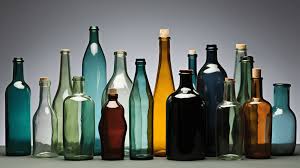Bottles are more than mere containers; they are storytellers of human ingenuity, culture, and progress. From humble beginnings as simple vessels for storage to their transformation into symbols of innovation and sustainability, bottles have journeyed through history alongside humanity. This article explores the fascinating evolution of bottles, uncovering their role as functional tools, cultural icons, and harbingers of change.
Ancient Origins: Bottles as Basic Necessities
The story of bottles begins thousands of years ago, when early humans sought ways to store and transport essential liquids like water, oil, and wine. The first bottles were made from organic materials such as gourds, animal skins, and clay. These vessels were prized not only for their practicality but also for their craftsmanship, often adorned with intricate patterns or inscriptions reflecting the artistry of their time.
The advent of glass making around 1500 BCE in ancient Mesopotamia revolutionized bottle production. Glass bottles, though initially rare and costly, became symbols of wealth and sophistication. Over time, innovations like the Roman technique of glassblowing democratized the production process, making bottles more accessible to ordinary people. These early containers set the stage for the bottle’s enduring presence in human life.
Bottles Through the Ages: Form Meets Function
As civilizations advanced, so too did the design and utility of bottles. In medieval Europe, glass bottles were used primarily to store precious commodities like wine and perfume. Their shapes and sizes varied widely, reflecting the specific needs of the time. By the 17th century, bottles began to take on more standardized forms, especially with the rise of industries like brewing and distilling.
The industrial revolution marked a turning point in bottle manufacturing. Machines replaced manual labor, enabling mass production of glass bottles at unprecedented speeds. This era also saw the emergence of branding on bottles, with companies embossing logos and labels to distinguish their products. Bottles became more than storage items; they became marketing tools that conveyed identity and quality to consumers.
The Plastic Revolution: Convenience at a Cost
The 20th century brought yet another transformation with the invention of plastic. Lightweight, durable, and inexpensive, plastic bottles quickly became the preferred choice for industries ranging from beverages to personal care. Their convenience reshaped consumer habits, offering a portable and disposable solution for modern lifestyles.
However, the rise of plastic also brought environmental challenges. The very qualities that made plastic bottles so popular durability and longevity turned them into a global waste problem. Billions of bottles discarded each year contribute to pollution, threatening ecosystems and wildlife. This crisis has sparked a growing movement to rethink how we use and dispose of bottles, prompting a shift toward more sustainable solutions.
Designing for the Future: Bottles as Sustainable Icons
Today, the evolution of bottles is driven by the urgent need for sustainability. Designers and manufacturers are exploring innovative materials such as biodegradable plastics, recycled glass, and even plant based alternatives. Smart bottles equipped with digital technology are entering the market, offering features like hydration tracking and automatic reordering for beverages.
Refillable and reusable bottles are gaining popularity as consumers seek to reduce waste and embrace eco friendly habits. Companies are also adopting circular economy models, where bottles are collected, cleaned, and reused, creating a closed loop system that minimizes environmental impact. These advancements reflect a broader vision for bottles as tools for a greener future.
Cultural and Symbolic Significance: More Than Just Containers
Beyond their practical uses, bottles hold deep cultural and symbolic meaning. The concept of a “message in a bottle” has captured imaginations for centuries, representing hope, connection, and mystery. Bottles also serve as artifacts, offering glimpses into the past. Archaeologists often uncover ancient bottles that reveal details about trade, daily life, and artistic trends in historical societies.
In modern times, bottles have become canvases for expression, with designers and artists using them to create works that challenge perceptions and provoke thought. From limited edition luxury bottles to upcycled art installations, these creations highlight the enduring versatility and cultural resonance of bottles.
The evolution of bottles mirrors humanity’s journey marked by creativity, adaptability, and the constant drive for progress. From their origins as simple vessels to their current role as agents of sustainability and innovation, bottles have remained integral to our lives. As we face the challenges of the 21st century, the bottle’s story is far from over.
In reimagining bottles for the future, we are not only addressing practical needs but also shaping a vision for a more sustainable and connected world. These unassuming objects remind us that even the simplest tools can inspire profound change, proving that the journey from vessels to visions is one worth celebrating.
